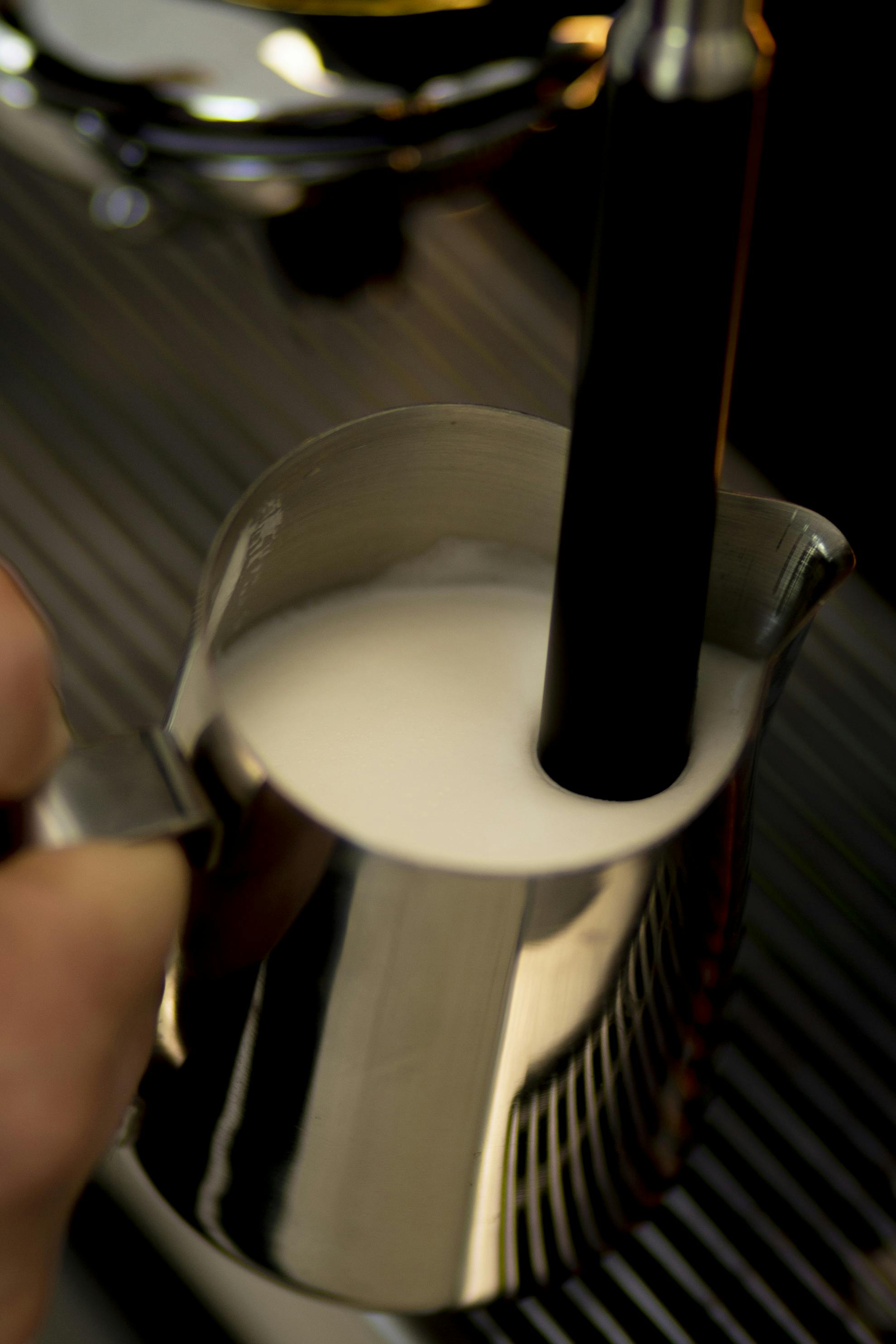Please select your preferred language
Blog
Latent Heating
The evolution of coffee craft

Many folks think that the bubbles in milk are wrapped around steam.
Bubbles form around air, not around steam — steam is water vapor, and a steam bubble must collapse as soon as the water condenses. In this sense, latte foam is an air foam, not a steam foam. The steam is mostly a source of heat (raising the milk temperature) but also of kinetic energy which drags the air into the milk.
Have you ever wondered why we use steam to heat milk instead of a different system, such as induction? The answer lies in the power of latent heat. Latent heat is the term used for the huge amount of energy released when a substance changes phase from a gas to a liquid. When we steam milk, the milk can gain as much as 10% in volume as the steam condenses and passes its energy into the milk (100 g of milk would weigh 110 g after steaming). If not for the power of latent heat, we would need to use a dangerously hot espresso machine. For example, if we wanted to heat 100 ml of milk at 4° C up to a temperature of 60° C, without the effect of latent heat and using that same 10 ml of water, that water (steam) would need to be 620° C. Personally, that’s a boiler I’d stand nowhere near.
Espresso machine steam boilers are usually set at between 122° C and 125° C and 1.1 to 1.3 bar of pressure. This means the phase change from liquid to gas does most of the heavy lifting. In essence, the steam boiler acts as a giant battery (or capacitor). It sips on electrical juice throughout the day, storing it as latent heat within the steam, ready and waiting to be unleashed at a moment’s notice. That means we can heat milk incredibly fast, without needing excessive electrical bandwidth to make it happen.
This incredible transfer of energy is quite hard to predict. Especially if we're using varying volumes of milk. As a traditional barista, the speed at which differently sized milk pitchers will heat up is very obvious. What's not obvious is the delay between the temperature you feel with your hand, and the temperature of the liquid milk inside the pitcher. The smaller the volume of milk, the larger the delay. This is because the same amount of energy is being released by the machine every time.
Instead of guessing, thermometers are crucial. Even better is a system designed to shut off the steam at just the right moment: a moment that can be less than a second long.
It's hard making coffee as a human, and much easier if we apply the right tools to the job!
To the boundaries of coffee